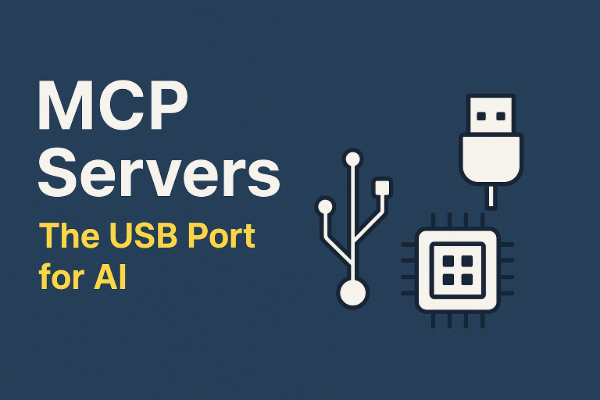Today’s nugget on Model Context Protocol (MCP): MCP servers are the small, practical piece of infrastructure that make AI actually useful in production.
AI models are getting smarter, but integration is still the bottleneck. Teams stitch together ad-hoc connectors, lose context across calls, and treat models like isolated experiments. MCP servers change that.
Think of an MCP server like a USB port for AI: expose your services, data, and workflows once, and any compatible model or agent can discover and use them safely and consistently. That means:
- Less brittle integrations — stop writing custom glue every time a model or API changes.
- More reliable context — preserve state and semantics across model calls so behavior is predictable.
- Actionable AI — models can do work (trigger jobs, query internal systems, update records) instead of only generating text.
For engineers, MCP servers shorten the path from prototype to production. For product teams, they make AI features deliverable and auditable. And for the organization, they transform LLMs from flashy demos into dependable collaborators.
A quick checklist if you’re considering an MCP approach:
- Define capabilities: What functions, data, and workflows should the model be able to call? Document them.
- Standardize contracts: Use clear input/output schemas so models and services don’t misinterpret each other.
- Enforce safety & auth: Gate actions behind permissions and validation to avoid surprise behavior.
- Log & observe: Capture calls, decisions, and results so you can debug and improve.
MCP isn’t magic — it’s practical engineering that scales. If you want to move beyond toy demos and make models actually earn their keep, start by making them useful participants in your systems. Expose the right capabilities via an MCP server, and the rest becomes a matter of composition.
If you want, I can also create a short code example or an architecture sketch showing how an MCP server sits between your APIs and an LLM agent.
